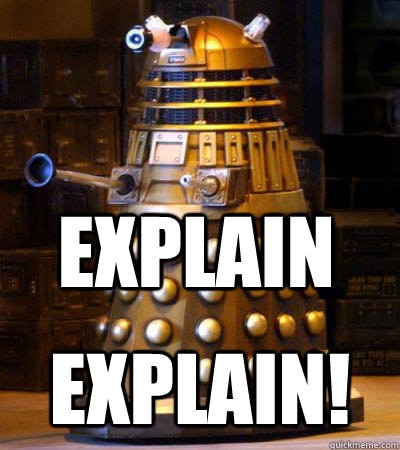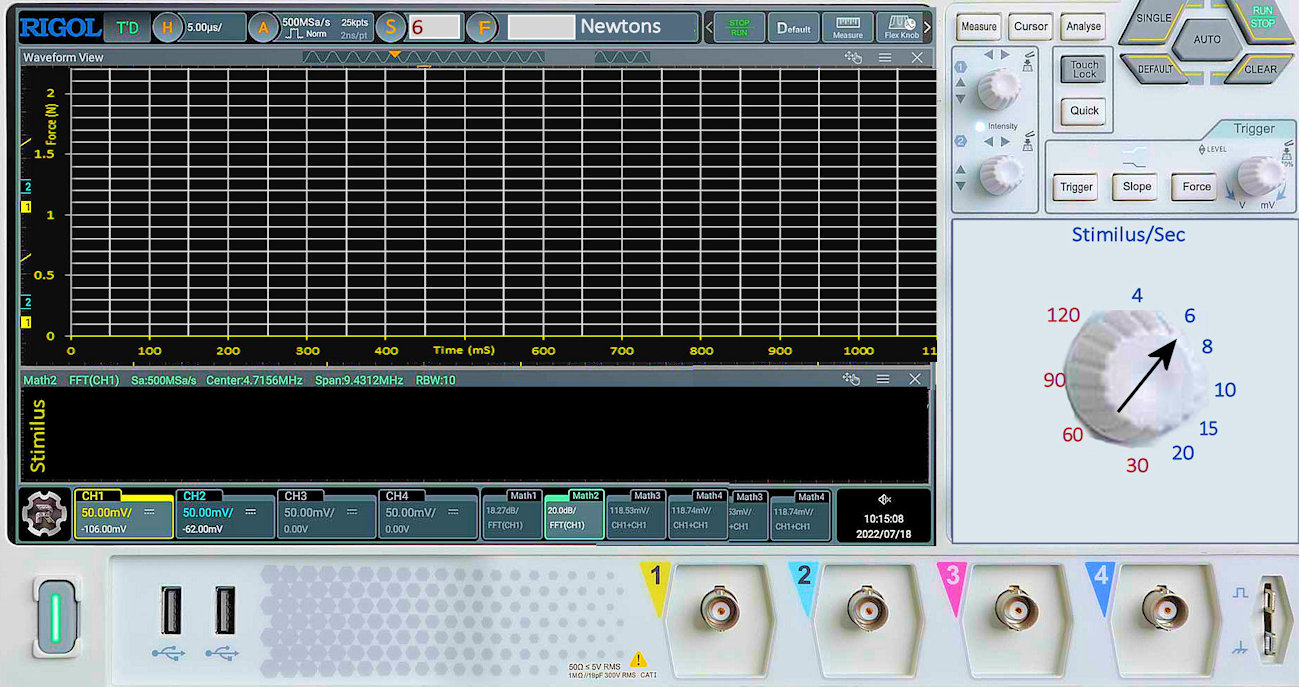In part 1, we looked at the concepts of threshold and motor unit recruitment by increasing the voltage. This gave us a series of increasingly stronger single twitch contractions. In part 2 we will look at what happens when we stimulate the muscle multiple times. We will start out slow with 4 stimuli per second. This will give us 4 twitch contractions. We increase the number of stimuli given to Grogu's muscle to observe summation, treppe, tetanus, and finally fatigue.
If you observe the oscilloscope below, you will notice that the X axis (milliseconds) has changed. The stimuli will begin at 100 mS and end at either 1000 mS or when the force goes off the Y axis. Notice for the last 2 (90 and 120) the muscle begins to lose force without going off the axis. This is because the muscle is beginning to fatigue.
Click on each of the frequencies of contraction starting with 4 contractions per second. Note the max force when the muscle stops contracting.

